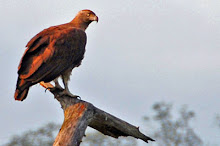'Steve McCurry UNTOLD' - stories behind his photographs
Steve McCurry shares the story of his most famous portrait, of The Afghan Girl, that became 'the most recognisable photo in the history of National Geographic magazine', and finding out her identity years later.
During 'Steve McCurry UNTOLD' event at The Southbank Centre, London, sharing the stories behind his photographs :
During 'Steve McCurry UNTOLD' event at The Southbank Centre, London, sharing the stories behind his photographs :
"..And there we found her, 17years later..near Peshawar.. After 9/11, with renewed interest in her to help her, when Afghanistan was in the news again. That anonymous, orphaned "Afghan Girl" with haunting eyes, seen for a fleeting few minutes in 1984 in that old tent- a makeshift classroom for girls in a refugee camp, near Peshawar. After 2 weeks search in 2002, with many claiming to be her in that famous June 1985 cover photo and claiming to be familiar with me as that photographer, We finally found her, through her brother- who has similar eyes, and found out that her name is Sharbat Gula- here with her 1yr-old daughter..
Her big dream was to perform the Haj..to take her husband and brother on the pilgrimage to Mecca. National Geographic arranged for that. She then wanted to take 5 of her dear friends with her too!. Well, we were also thrilled for her.. to fulfil that dream of hers.. She has only been photographed twice in her life, both times by me..We actually keep in touch with her to this day.. By this time we had raised lot of money, more than $1m, to help build schools for young girls in Afghanistan, thanks to generous people who felt moved by her story.."
Her big dream was to perform the Haj..to take her husband and brother on the pilgrimage to Mecca. National Geographic arranged for that. She then wanted to take 5 of her dear friends with her too!. Well, we were also thrilled for her.. to fulfil that dream of hers.. She has only been photographed twice in her life, both times by me..We actually keep in touch with her to this day.. By this time we had raised lot of money, more than $1m, to help build schools for young girls in Afghanistan, thanks to generous people who felt moved by her story.."
Sharing other experiences of his photographic assignments, he also paid rich tribute to his many helpers and fixers on the streets, including a taxi driver from Mumbai, whom he found so helpful and resourceful in fixing issues and finding connections, getting out of 'situations' etc, to make his photo-stories happen, that he ended up taking that taxi driver as helper/fixer in many countries in Asia!
[ Also see: Aug 2013 interview with Newsweek- PORTRAIT OF THE PHOTOJOURNALIST ]
+
Personal recordings of this Talk in London:
First 20min of his 40min talk he was sharing only the experience of India, where he said he started NatGeo asignments.. and went back 19 times.."where you can travel endlessly, without ever getting tired of the place.."
+ Part2 last 3min (which is the last part about Sharbat Gula) of talk + Q&A: +
'Finding The Afghan Girl', [4min] clip @NatGeo:
'National Geographic Search for the Afghan Girl' [30min feature]:
http://www.youtube.com/watch?v=0Uw0JukBGmk
+ Steve McCurry shares the story behind his iconic photograph: 'Widow, Vrindavan, India (1995)'
+
Sharbat Gula has been staring at me from above the fireplace in my room for some years now.. It was a birthday gift, 'Portraits', by Steve McCurry:
+ Part2 last 3min (which is the last part about Sharbat Gula) of talk + Q&A: +
'Finding The Afghan Girl', [4min] clip @NatGeo:
'National Geographic Search for the Afghan Girl' [30min feature]:
http://www.youtube.com/watch?v=0Uw0JukBGmk
+ Steve McCurry shares the story behind his iconic photograph: 'Widow, Vrindavan, India (1995)'
Sharbat Gula has been staring at me from above the fireplace in my room for some years now.. It was a birthday gift, 'Portraits', by Steve McCurry:
Labels: #AfghanGirl, #NationalGeographic, #Photography, #SharbatGula, #SteveMcCurry, #SteveMcCurryUntold




